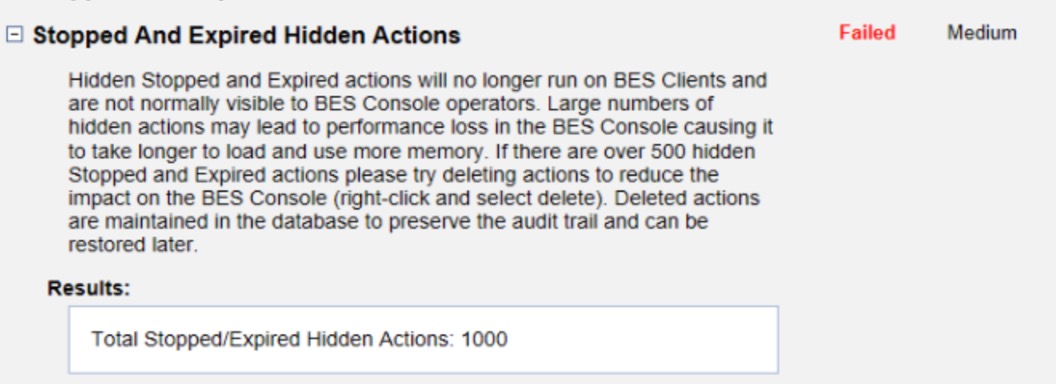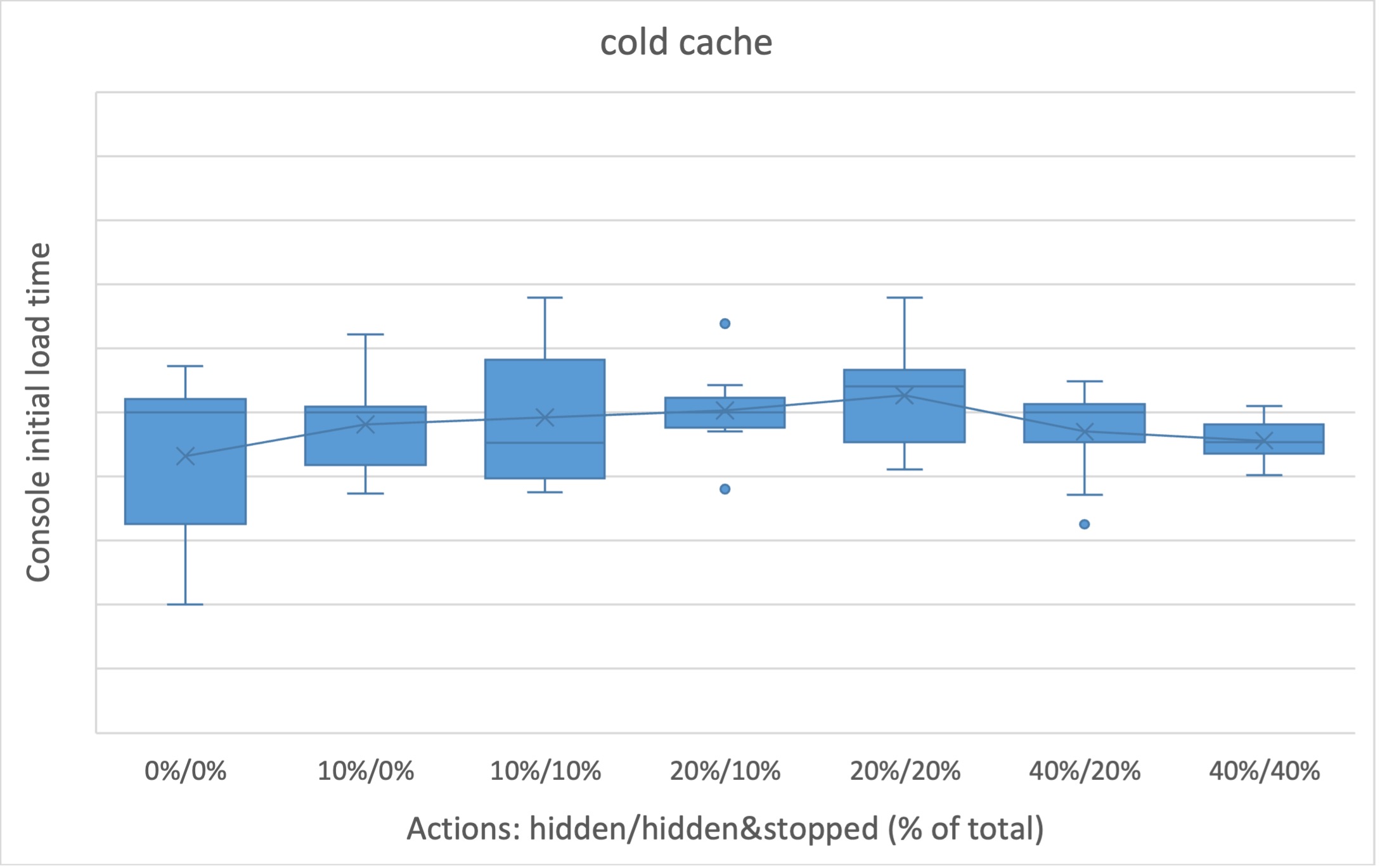Console Performance: The Health Check Dashboard and Hidden Actions
Authors: Mark Leitch & Paolo Cavazza @ HCL Technologies
The BigFix Console is the primary system management interface for BigFix deployments. BigFix deployments can be represented by anywhere from thousands to hundreds of millions of objects at the database level. The BigFix team is continuously working on performance, seeking to ensure new code is production ready, existing code does not regress, and new performance solutions are delivered. This blog is the first installment on a variety of topics for console performance.
In this installment we will focus on the impact of hidden actions. Why hidden actions? If you manage a large scale BigFix deployment you may have seen this warning in the Health Check Dashboard.
Based on customer feedback, we wanted to improve the guidance here. What is the true impact of stopped and hidden actions? With all the improvements in BigFix, do the old standards apply?
To answer these questions, console simulation was driven with a variety of configuration possibilities. The configuration possibilities are permutations of the data objects derived from the following SQL queries. The type of objects derived from each query should be self-explanatory.
- select count(*) as actions from ACTIONS
- select count(*) as hidden_actions from ACTIONS where Type = 7
- select count(*) as hidden_stopped_actions from ACTIONS where Type = 7 and IsStopped = 1
So, what did the simulation results tell us? Essentially, the console is now less impacted by stopped hidden actions than previously thought. The graphs below show the deployment permutations along with the console load times for both a cold and hot cache.
To be more specific, in the simulation environment, the relative contribution of actions to the initial console load time may be broken down as follows. The impact is independent of whether the actions are hidden and/or stopped,
- Cold cache: 3 to 4 milliseconds for each additional action.
- Hot cache: less than 1 millisecond for each additional action.
What does this mean for BigFix? The console is now easier to manage, with very stable behavior. We expect future changes to the Health Check Dashboard to provide more accurate guidance. For example, at the time of this writing, we expect to double the warning threshold for effectively a 100% improvement!
It should be noted that the best answer for all BigFix performance questions is: it depends. Experiences can vary widely based on infrastructure capability and database object cardinality. To assist with this, a Non-Functional Requirements (NFR) guide is available (see the URL below) to manage performance and security for BigFix deployments.
Further Reading
In the event further reading is desired, the following technical resources are available.



